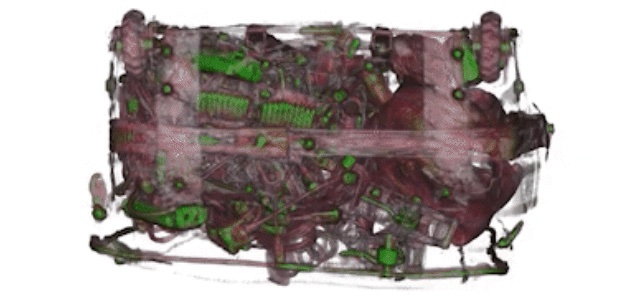
The fight against poaching and wildlife trafficking is at the heart of several research projects. These include the Lindbergh Foundation’s drones, which Neurala has partnered with, the TrailGuard AI camera from Resolve, in partnership with the National Geographic Society, Intel and the Leonardo DiCaprio Foundation, and DeepMind’s technology for the Serengeti herds. These tools are a great help for the rangers and associations on the spot. Microsoft has also developed an AI research project called SEEKER to make a difference in the fight against poaching.
The illegal wildlife trade is one of the five most lucrative global crimes and involves more than 7,000 species worldwide. It is driven by highly organized criminal networks that exploit transportation and financial systems to move illegal animal products and the profits from their sale through laundering.
SEEKER is a Microsoft AI research project that has been piloted at London’s Heathrow Airport and has demonstrated its ability to detect illegal wildlife items hidden in luggage and cargo. The aim is to then trace them to stop poaching. This project has attracted the attention of United for Wildlife, which was established in 2012 by The Royal Foundation of the Duke and Duchess of Cambridge and Prince Harry. This organization aims to prevent traffickers from transporting, selling and profiting from illegal wildlife products.

By cooperating with the transport, finance and NGO sectors and sharing its information globally, United for Wildlife seeks to disrupt this criminal network. So it was only natural that the organization became interested in this new AI-based analysis technology and supported its development. The SEEKER project team was able to draw on the expertise of United for Wildlife’s global network on the illegal wildlife trade. In the future, United for Wildlife will facilitate the global rollout of SEEKER with its partner organizations in the transport sector.
Commenting on the trade, Lord William Hague, Chair of the United for Wildlife Working Group, said:
“This is a hugely complex global problem, but when institutions including transport, technology, financial services and law enforcement agencies work collaboratively to share knowledge, expertise and information, it improves our ability to detect and dismantle the sophisticated criminal networks behind each act of trafficking. Working in partnership with the public and private sectors is crucial if we are to stop this illegal trade for good.”
Project SEEKER’s AI model is optimised to detect illegal wildlife products being trafficked in luggage and cargo, at airports, ports or borders.
Microsoft developed it in partnership with UK Border Force and Smiths Detection. They taught it to identify animals or illegal products, such as those used for drugs, by uploading their image and those of their body parts. The system performs a 3D scan of a bag, generated by Smiths Detection’s X-ray scanners, rotates the image to get a full view of the luggage, filters out unrelated objects such as clothing and isolates any objects that match the images it has been trained on.
Subsequent testing at Heathrow demonstrated that the algorithm can be trained on any species in just two months. If an illegal wildlife item is detected during a cargo or baggage scan, security and border officials are immediately alerted by SEEKER, with the seized items used as evidence in criminal proceedings against the smugglers.
Jonathan Coen, Director of Security at Heathrow Airport, said:
“Project SEEKER and our partnership with Microsoft and Smiths Detection will allow us to stay one step ahead of smugglers, exploring new technologies that will help us protect the world’s most precious wildlife.”
So Microsoft tested SEEKER’s Azure Machine Learning technology at Heathrow Airport, where it scanned up to 250,000 bags a day. It recorded a detection rate of more than 23% but is much better at identifying ivory items such as tusks and horns with a 70% success rate.
Clare Barclay, CEO of Microsoft UK, said:
“The untapped potential of AI and machine learning can help solve some of the world’s most complex environmental challenges. Our unique multi-species AI model, Project SEEKER, can help combat wildlife trafficking, while protecting animal ecosystems. The importance of collaboration and partnership with more organizations couldn’t be greater as we seek to protect the environment and the world’s most endangered species.”
Daniel Haines, AI specialist and SEEKER project manager at Microsoft, noted:
“Illegal wildlife trafficking is having a devastating effect on the decline of the Earth’s species and natural environments. It is a complex illegal trade but with the right AI intervention deployed in the right places, we have a real opportunity to dismantle it. Project SEEKER shows the potential of data and AI to enable enforcement teams to crack down on wildlife trafficking like never before.”
SEEKER can provide insights for global law enforcement teams to better see what is being trafficked, where it is coming from and where it is going. With a better understanding of criminal tactics and illegal trade patterns, because of the kind of data it provides, private and public sector organisations and law enforcement agencies can take more informed action. Prince William has declared it crucial in this fight and Daniel Haines concluded:
“Improving detection rates of illegal wildlife trafficking in transit hotspots is just the beginning. The data captured by the authorities will enable them to create a clear picture of where smuggling starts, its routes and destinations, leading to a more effective and collaborative approach to eliminating these criminal networks.”
Translated from Focus sur SEEKER, un modèle d’intelligence artificielle pour lutter contre le trafic d’animaux sauvages









